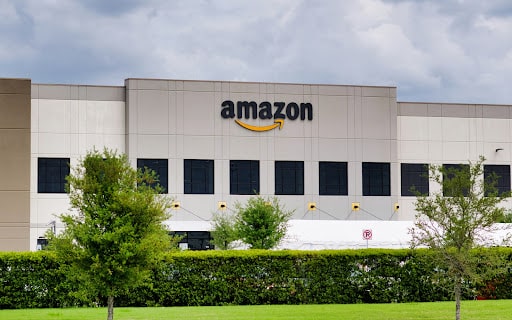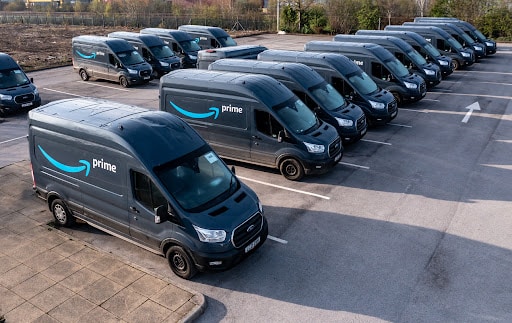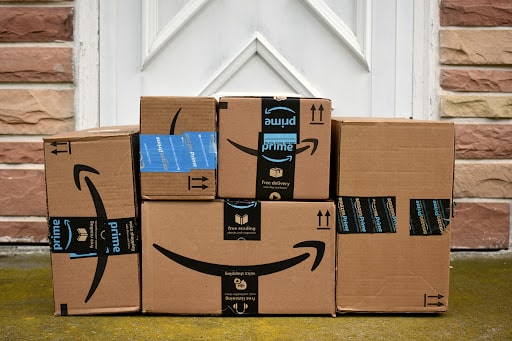Picture this scenario: you’re browsing through Amazon, casually looking for a new pair of shoes. You find a few options that catch your eye, but before you can decide, you get distracted and leave the website. The next day, as you’re scrolling through social media or checking your email, you suddenly see an ad for those same shoes on Amazon. Coincidence? Not quite.
Today, businesses, both big and small, are utilizing retargeting ads to bring back potential customers who have abandoned their carts or left their websites without making a purchase. When it comes to Amazon, the world’s largest online retailer, retargeting ads can be a powerful tool for boosting sales and reaching new audiences.
This guide will dive into the world of Amazon retargeting ads, giving you everything you need to know, from what they are and how they work to tips and strategies for maximizing their effectiveness.
Key takeaways
- You can retarget customers on and off Amazon with Amazon’s Sponsored Display Ads. This means reaching potential customers while browsing other websites or social media platforms.
- By utilizing retargeting with the Amazon Advertising Platform (AAP), you can target customers who have interacted with your products on Amazon but have not yet made a purchase.
- To measure the success of your retargeting campaigns, keep an eye on metrics such as click-through rates and conversion rates. These will give you valuable insights into the effectiveness of your ads and allow you to make adjustments for better results.

What is Amazon retargeting?
Amazon retargeting is a marketing strategy that involves showing ads to potential customers or those who have previously interacted with your brand on Amazon but have not made a purchase. This can include product searches, brand views, and even abandoned carts.
While traditional Amazon ad campaigns target a broad audience, retargeting ads focus on reaching potential customers who have already shown interest in your products. This makes it a highly effective and cost-efficient advertising strategy.
What is the difference between retargeting and remarketing?
Retargeting and remarketing are often used interchangeably, but they have different meanings. While both strategies aim to bring back potential customers who have not completed a purchase, the main difference lies in their targeting methods.
- Retargeting involves showing ads to customers based on cookies, which track their behavior on your website or Amazon. When customers browse the web, retargeting creates touch points to remind them of a product or service they have shown interest in.
- Remarketing targets customers based on their information and creates a list of customers to send emails or ads to. This can include customers who have purchased in the past and are more likely to be interested in similar products or services.
How does retargeting work?
Retargeting is a cookie-based technology that uses JavaScript code to anonymously follow your audience as they browse through the internet. Once a potential customer visits your website or interacts with your brand on Amazon, unobtrusive code (pixel) that is unnoticeable to them is placed on their browser. This code then allows the advertiser to follow them around the web and show ads to them even when they’re not on your website.
There are different ways retargeting can identify potential customers or high-value audiences, including:
Product searches
Often, customers will leave your website without making a purchase but may have entered specific keywords associated with your products. This could indicate their interest, and you can remind them of the product they were considering by retargeting them.
It’s important to note that Amazon determines these keywords through its algorithm, and they cannot be manually selected or identified. While limited information is available on how this algorithm works, it’s best to ensure your product listings have relevant and specific keywords for better targeting.
For instance, if you sell shoes and a customer searches for “running shoes” on Amazon, retargeting ads can show them your specific running shoe product page even when they’re not browsing similar products.
Brand views
Most shoppers on Amazon will browse through a brand’s products before making a purchase. If a potential customer has viewed your brand’s products for a certain period, you can set up retargeting ads specifically for them.
One effective way to use this targeting is by promoting complementary products. For example, if you sell skincare products and a customer has viewed your moisturizer, you can retarget them with an ad for your facial cleanser.
Brand purchases
As the name suggests, this targeting involves showing ads to customers who have previously purchased a product from your brand. It can be used for cross-selling and upselling opportunities if you have various products within the same brand. In fact, 35% of Amazon’s total revenue comes from cross-selling and upselling.
This is a great way to expose customers to other products they may be interested in but have not yet discovered on your brand’s page. For example, if a customer purchased a smartphone case from your business, you can retarget them with an ad for a screen protector or wireless charger. You may even offer a bundled deal for a discount to entice them to make an additional purchase.
Product views
When a customer views a product on Amazon but does not make a purchase, they are considered a potential customer. And with about 70% of online shoppers abandoning their carts without completing a purchase, this is a huge opportunity for retargeting.
Retargeting ads can remind customers of the product they are interested in and entice them to buy before it’s too late. This is why retargeting through Sponsored Display Ads on Amazon has become increasingly popular among sellers.
According to Drip, the average cart abandonment rate across all industries is 69.57%, and eCommerce brands lose $18 billion in sales revenue each year due to cart abandonment. Retargeting ads can significantly reduce this number, not to mention increase your conversion rates.
SIM Product Views
Similar items (SIM) are products Amazon recommends to customers based on browsing history and purchases. If a customer browses your competitors’ similar products, Amazon can use this information for SIM targeting in your retargeting ads.
Amazon’s algorithm automatically determines which ASINs to target based on the products a customer has viewed or purchased. An excellent example of this is the “Customers who viewed this item also viewed” section on a product page.
SIM views enable you to reach a wider audience and increase the chances of converting potential customers interested in similar products. This is especially useful for sellers with niche or specialized offerings that may not have as much competition.
Reasons to use Amazon retargeting
For most businesses, customer retention is as important as acquiring new customers. According to Zippia’s research summary, investing in customer retention by 5% can increase profits by 25-95%. This makes sense when you consider that returning customers are more likely to purchase than new customers.
In fact, 60-70% of businesses’ sales come from existing customers and only 5-20% from new customers. This is why it’s crucial to maintain a strong relationship with your customers and keep them engaged with your brand.
Enter retargeting. By focusing on customers who have already shown interest in your brand, you can increase their purchase frequency, cross-sell opportunities, and improve conversion rates.
Here are some reasons why Amazon retargeting should be a crucial part of your marketing strategy:
Increase purchase frequency
Retargeting ads can help remind customers of the products they are interested in and encourage them to purchase. This is especially useful for repeat purchase products with an ongoing buying window.
For instance, if you sell personal hygiene products, you can retarget customers with an ad showcasing your toothpaste if they bought your hand soap. Or, if a customer has purchased a grooming tool from your brand, you can retarget them with an ad promoting replacement blades or other related products.
In addition, retargeting helps save on advertising costs by focusing on customers who are already familiar with your brand and have shown interest in your products. This results in a higher conversion rate and ROI for your ad spend.
Retargeting ads can also help you stay top of mind for customers who may not have an immediate need for your products but are likely to make a purchase in the future. It’s all about keeping your brand relevant and reminding customers of the value you offer.
Cross-sell opportunities
Potential revenues don’t end after a customer makes a purchase. There’s a lot of potential for more business through cross-selling and upselling opportunities. While cross-selling involves promoting complementary products, upselling focuses on encouraging customers to upgrade or purchase a more expensive version of a product.
Cross-selling and upselling are powerful ways to increase revenue and improve customer satisfaction. By identifying cross-selling opportunities through retargeting, you can tap into this potential.
Here are a few tips for identifying cross-selling opportunities:
- Gather insight from customer data: Your customer’s preferences and previous purchases can provide valuable information for identifying cross-selling opportunities. By tracking their buying patterns across emails, websites, and other devices, you can understand their preferences and offer customized product recommendations at the right time in their customer journey.
- Take note of customer feedback: Pay attention to what your customers say about your products and services. Are they asking for additional features or expressing dissatisfaction with any product? A customer’s feedback can provide insights into potential cross-selling opportunities.
- Use data analytics tools: By analyzing customer behavior data such as purchase history, frequency, and duration of being a customer, you can identify patterns and trends that can be used to target cross-selling opportunities.
- Build customer relationships: Cross-selling opportunities are best discovered through direct customer communication. Take time to talk to them and understand their needs, challenges, and goals. This will help you build customer relationships and identify cross-selling complementary products or service opportunities.
Other capabilities of display advertising
Another benefit of display advertising on Amazon is the ability to reach new audiences. Sponsored display ads appear on external websites within Amazon’s ad network, exposing your brand to potential customers who may not have visited your product’s page on Amazon.
This is especially useful for promoting new products or targeting a different demographic than your usual customer base. Expanding your reach can potentially increase sales and gain new loyal customers.

Retargeting with Amazon Sponsored Display Ads
Amazon Sponsored Display Ads are programmatic advertising available to registered brand owners and professional sellers on Amazon. Launched in 2019, this newest Amazon PPC (pay-per-click) advertising option has quickly gained popularity due to its effectiveness in retargeting customers.
Sponsored Display Ads allow you to show ads on and off Amazon, targeting customers who have viewed or engaged with your product listings. These ads appear on high-traffic sites within Amazon’s ad network, such as IMDb, Dailymotion, and various mobile apps, making this strategy an excellent way to reach new audiences and drive traffic to your product pages.
There are three ways you can target Sponsored Display Ads:
- Product targeting: If you are a third-party seller or a vendor enrolled in the Amazon Brand Registry, you can use product targeting to display your ad on the listings of competing products or complementary products. Product targeting can help you increase your product’s visibility and potentially attract customers already interested in similar products.
- Views remarketing: This type of ad targets customers who have previously viewed your product detail page but did not purchase. By showing them an ad for the same or related product, you can remind them of their initial interest and encourage them to complete their purchase. Views remarketing is available for third-party sellers and vendors enrolled in the Amazon Brand Registry.
- Interest targeting: This unique targeting option is only available for vendors. It allows you to reach potential customers interested in your products based on their browsing history. You can introduce your brand and products to new audiences by showing them ads related to their interests.
While retargeting with Sponsored Display Ads can be an effective way to drive sales and reach new audiences, it’s crucial to have a balanced strategy to make the most out of your campaigns.
The difference between DSP and Sponsored Display Ads
Amazon retargeting DSP (demand-side platform) is a programmatic advertising solution that allows advertisers to reach audiences at scale through various ad formats, including display, video, and audio ads. In contrast, Sponsored Display Ads are a self-service advertising option available exclusively on Amazon.
The main difference is that Amazon’s retargeting DSP enables advertisers to buy ads programmatically across multiple platforms. At the same time, Sponsored Display Ads are only available on and off Amazon within the company’s ad network.
Additionally, Sponsored Display Ads use a vCPM (cost-per-1,000 viewable impression) model and CPC (cost-per-click), while Amazon DSP offers multiple pricing options, including CPM (cost per 1,000 impressions), and CPA (cost per acquisition). This allows advertisers to choose the best pricing model for their campaigns more flexibly.
While Sponsored Display Ads and Amazon DSP can effectively retarget customers, they serve different purposes and are suited for different campaign objectives.
For example, if you want to reach a wide audience across multiple platforms, Amazon DSP may be the better option. But if you want to focus on retargeting customers who have engaged with your products on Amazon, Sponsored Display Ads would be the way to go.

5 Tips for successful Amazon retargeting campaigns
Now that we’ve covered the basics of Amazon retargeting and the differences between DSP and Sponsored Display Ads, let’s explore some tips for running successful campaigns on Amazon:
1. Know your target audience
Before launching any retargeting campaign, it’s essential to have a clear understanding of your target audience and their interests. This will help you create relevant ads and reach the right people at the right time.
Using Amazon’s targeting options, such as product targeting and interest targeting, can help you narrow down your audience and increase the effectiveness of your ads. In addition, analyzing data from past campaigns can provide valuable insights into your audience’s behavior and preferences.
2. Use eye-catching creatives
With so many ads competing for attention, making your retargeting ads stand out is crucial. Use high-quality images or videos that showcase your products and catch the viewer’s eye. Including clear and concise messaging can also help convey your brand’s unique selling points and entice potential customers.
3. Have a clear call-to-action
While creating your ads, don’t forget to include a clear call-to-action (CTA). This could be directing viewers to your product listing or offering a discount code for their next purchase. Including a CTA can increase the chances of conversion and make it easier for customers to take the desired action.
Give them a reason to click on your ad and make it as easy as possible for them to do so. For more tips on creating effective CTAs, here are some questions to ask yourself:
- What do I want my audience to do after seeing this ad?
- How can I entice them to take that action?
- Is the CTA clear and easy to understand?
- Does the CTA stand out visually?
- Is there a sense of urgency in the CTA?
- Does the CTA align with my campaign objectives?
A compelling CTA can make all the difference in the success of your retargeting campaign.
4. Test and optimize your ads
As with any advertising campaign, testing and optimizing your retargeting ads is crucial for success. Run A/B tests on different ad formats, creatives, and messaging to see what resonates best with your target audience. Use Amazon’s reporting tools to track the performance of your campaigns and make adjustments accordingly.
Additionally, consider using Amazon’s dynamic ads feature that automatically updates your retargeting ads based on the customer’s browsing history and interests. This can help personalize the ad experience for each viewer, increasing the chances of conversion.
5. Don’t forget about mobile
With more people shopping on their phones and tablets, optimizing your retargeting ads for mobile viewing is essential. Ensure your mobile-friendly ads use appropriate image sizes, clear text, and easy navigation. You can also use Amazon’s mobile targeting options to reach customers on their preferred devices.

Strategies for retargeting at different stages of the funnel
Competition, customer behavior, and purchase intent can vary at different stages of the advertising funnel. But to get the full benefit and effective ROI on your Amazon retargeting campaigns, you need to have a well-rounded focus and creative strategy that caters to all stages of the funnel.
From top-of-funnel to bottom-of-funnel, here are some targeting strategies and key performance indicators (KPIs) to consider:
Top-of-funnel
At the top of the funnel, you aim to increase brand awareness and reach new potential customers. It’s the first step in engaging with customers and building brand loyalty. Top-of-funnel ads can also help increase Amazon’s business and consumer pipeline.
To effectively target customers at this stage, consider utilizing in-market audiences. This allows you to reach shoppers broadly shopping in the same category as your products. You can also use interest targeting to reach customers who frequently search for similar products.
While running top-of-funnel retargeting ads, keep an eye on KPIs such as impressions, click-through rate (CTR), and detailed page view rate (DPVR) to measure the success of your campaign.
Middle-of-funnel
At this stage, customers have already shown an interest in your products or similar items. The goal here is to target them at a more granular level and encourage them to purchase.
Competitor conquesting, contextual targeting, and cross-selling strategies can be effective for middle-of-funnel retargeting ads. You can also use Amazon’s custom audience-building tool to target customers who have recently engaged with competing or complementary products.
In terms of KPIs, keep an eye on your cost per thousand impressions (CPM), effective cost per detailed page view (eCPDPV), DPVR, and CTR. These metrics can help measure the effectiveness and efficiency of your ads.
Bottom-of-funnel
Maximizing conversions and encouraging repurchase behavior are the main objectives at the bottom of the funnel. Customers at this stage may have abandoned their carts or shown a high purchase intent, making it an ideal opportunity for retargeting.
Since a customer may already be on track to make an organic purchase, your retargeting efforts should focus on producing incremental sales. Personalized ads and exclusive targeting can help achieve this goal.
Some key metrics to track at this stage include return on ad spend (RoAS), cost per purchase (CPP), CTR, and percent of purchases.
Retargeting with Amazon Advertising Platform (AAP)
In addition to using Amazon Sponsored Ads for retargeting, sellers can also leverage the Amazon Advertising Platform (AAP) benefits. AAP allows you to run ads on third-party sites and apps through Amazon’s ad network. It provides more control over your campaigns and offers advanced targeting options such as audience segmentation, device and browser targeting, and dayparting (scheduling ads for certain times of day or days of the week).
However, due to its higher minimum budget requirements, AAP may not be the most feasible alternative for retargeting ads. But for sellers looking to explore this opportunity on third-party apps, it can provide a valuable addition to their retargeting strategy. The payment model for AAP is also different, with a cost-per-mille (CPM) instead of the usual cost-per-click (CPC).
Set up your Amazon retargeting campaign: A step-by-step guide
Having covered the key aspects and strategies of Amazon retargeting, here’s a step-by-step guide on how to set up your first campaign:
- Log in to your Seller Central account and go to the Advertising tab.
- Click on “Campaign Manager” and then select “Create Campaign.”
- Choose a campaign name, daily budget, and start and end dates. Then click “Continue to next step.”
- Select “Sponsored Display” as the campaign type and choose your targeting options.
- Choose which products you want to promote in your campaign, or select all if you wish.
- Set your bids for each ad group based on your budget and goals. You can also enable dynamic bidding for more efficient bid adjustments.
- Add your creatives, including images and ad copy. Ensure that they are eye-catching and optimized for different devices.
- Review your campaign settings and budget before launching the campaign.
- Once launched, monitor the performance of your ads using Amazon’s reporting tools and make adjustments as needed to optimize their effectiveness.
What’s the best way to manage Amazon retargeting ads?
Managing multiple retargeting campaigns on Amazon can be overwhelming, especially when you have other aspects of your business to focus on. That’s where automation tools like Trellis come in.
- Trellis offers a comprehensive solution for managing your Amazon retargeting campaigns, from keyword harvesting and discovery to full-funnel targeting and shopper insights. With advanced analytics, free PPC tools, campaign automation, and smart budgeting features, Trellis helps you optimize your campaigns for success.
- Trellis also offers catalog management solutions that use AI to promote new and best-selling products without cannibalizing organic sales. With features like dynamic programming and smart budgeting, you can effectively manage your catalog and maximize conversions.
Grow your Amazon market share and make every penny count with Trellis. Through daily bid optimizations and a composite media plan, our bidding algorithm helps you pay the lowest auction price while achieving your advertising objectives. We help you expedite your workflows and make data-driven decisions for better results.

Measuring the success of your Amazon retargeting campaigns
Understanding the impact and effectiveness of your retargeting campaigns is crucial for making informed decisions and optimizing future strategies. But how do you measure campaign performance and leverage data-driven insights in your favor? Here are some tips:
Choose your key performance indicators (KPIs) wisely
Establishing clear and relevant KPIs is the foundation of any successful retargeting campaign. Click-through rate (CTR), conversion rate, return on ad spend (RoAS), and revenue generated are common KPIs for Amazon retargeting. These metrics help you track engagement, conversions, and overall ROI.
However, it’s essential to determine which metrics align with your campaign objectives and business goals. This will help you focus on the most relevant data for better decision-making.
Leverage Amazon advertising reports
As discussed earlier, Amazon offers a comprehensive reporting tool suite to access valuable data about your retargeting campaigns. From sponsored product reports and sponsored brand reports to sponsored display reports, you can gather information on how your ads perform in terms of impressions, clicks, conversions, and other relevant metrics.
Use these reports to identify trends and patterns in your campaign performance and make data-driven decisions for future optimizations. Amazon’s reporting tools can also help you understand your customers’ behavior and preferences, enabling you to create more targeted and effective campaigns.
Get insights from ad creative and messaging
Your ad creative and messaging play a crucial role in catching your audience’s attention and driving conversions. It’s essential to assess their performance regularly and analyze which visuals, headlines, and call-to-actions resonate best with your target audience.
Go through your ad variations and identify the ones that performed the best. A test-and-learn approach, including A/B testing, can help you understand which elements of your ads drive the highest engagement and conversion rates.
Track your conversions accurately
While Amazon provides robust tools for tracking conversions, it’s essential to implement your conversion tracking correctly. Utilize tools like Amazon attribution, which enables you to track sales and conversions across different advertising channels, including retargeting ads. This way, you can attribute your ad spend to specific campaigns and better understand their impact on revenue.
Analyze and optimize based on placements and devices
Factors like ad placement and target device can significantly impact the performance of your retargeting ads. Monitor the data from different placements and devices to understand which drives the most conversions and revenue.
This information will help optimize your ad placements and device targeting to maximize engagement and conversions.
Experiment and test for continuous improvement
Retargeting is an ever-evolving strategy, and there’s always room for improvement. Continuously experiment with different elements of your campaigns, like creatives, headlines, CTAs, or targeting strategies. A/B testing can help you compare different variations and identify the ones that perform the best. This way, you can continuously optimize your campaigns for better results.
Final thoughts on Amazon retargeting
With more abandoned carts and increasing competition on Amazon, retargeting ads have become crucial for driving conversions and maximizing your advertising ROI. However, effectively managing these campaigns can be challenging, especially if juggling multiple aspects of your business.
That’s where automation tools like Trellis come in, offering comprehensive solutions for managing your retargeting campaigns and optimizing them for success. By leveraging data-driven insights and continuously experimenting with different elements of your campaigns, you can stay ahead of the competition and drive more sales on Amazon.
Get started today and take your Amazon retargeting game to the next level with Trellis. Book a demo now or sign up for a free trial to experience the benefits of our advanced tools firsthand.



